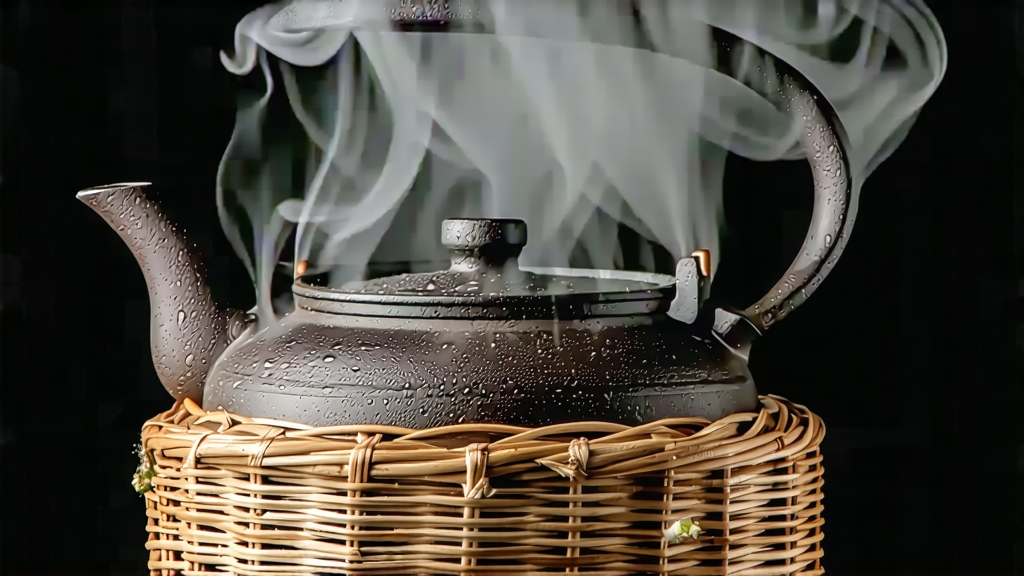
If green tea is the fresh-faced youth of Chinese tea and pu-erh the venerable elder, then yellow tea is the discreet scholar who appears rarely, speaks softly, and astonishes everyone once he finally opens his mouth. Among the six major Chinese tea families, yellow tea is produced in the smallest volume and is the least encountered beyond China’s borders, yet its hallmark “sealed yellowing” process creates a liquor that is both mellow and vibrantly alive. Within this tiny category, Mengding Huangya from the mist-capped Mengding Mountains of Ya’an, Sichuan, is the most storied and, many argue, the most refined expression of the yellow style.
Historical whispers place Mengding Huangya at the very birth of Chinese tea culture. The Mengding range, part of the Tibetan Plateau’s eastern rim, rises abruptly from the Sichuan Basin; its peaks trap perennial cloud cover that diffuses sunlight and bathes tea gardens in cool, ion-rich air. In 53 BCE, according to local gazetteers, the Daoist cultivar Wu Lizhen planted seven tea bushes on Ganlu (“Sweet Dew”) Peak, an act later celebrated as the first deliberate domestication of Camellia sinensis. By the Tang dynasty (618-907) the area was already designated an “Imperial Tea Garden,” and during the Song (960-1279) the court demanded Mengding teas as tribute, carried 1,200 km by fast horse along the “Ancient Tea Horse Road.” The earliest written mention of huangya (“yellow bud”) appears in the 16th-century Sichuan Gazetteer, describing a spring bud tea whose leaves turned golden after a slow, secretive fermentation. When the Qing court moved to Beijing, Mengding Huangya traveled north in small bamboo caskets lined with banana leaf; legend claims the Kangxi Emperor preferred it to the more famous Longjing because its gentle fragrance “did not disturb meditation.”
Mengding Huangya is not a generic yellow tea; it is a protected geographical indication limited to buds picked above 800 m within the three townships of Mingshan District. The cultivar of choice is the local “Mengding #9,” a sinensis var. sinensis strain that develops unusually high levels of theanine under cool, foggy nights. Picking begins in mid-March when the Chinese redbud blooms, and lasts only twenty days. Standard grade requires one unopened bud plus the adjacent half-expanded leaf; top grade insists on the bud alone, plucked before the dew dries so that surface moisture acts as a natural catalyst during yellowing. Experienced pickers pinch, never pull, rotating thumb and forefinger to keep the tiny seam at the base of the bud intact—any tear will oxidize into a rust blemish later.
The craft that converts these jade-green buds into golden slivers is known menhuang—“sealed yellowing”—a slow enzymatic oxidation that occurs without microbial involvement, distinguishing it from the fungal fermentation of hei cha. The process unfolds in five meticulous stages: kill-green, wrapping, yellowing, re-firing, and sorting.
- Kill-green: 180 °C bamboo-roasted wok, 4 min, 250 g per batch. The goal is to destroy leaf enzymes just enough to halt excessive oxidation while preserving moisture for the yellowing step. Master panners listen for the change from crackling sesame to muffled chestnut, a sonic cue that moisture has dropped to 55 %.
- Wrapping: the hot leaf is immediately piled into bundles of 30 g inside squares of oil-free parchment, then slid into linen pouches. The bundles are stacked in a wooden chest lined with wet cotton; core temperature is held at 32 °C for 3 h. During this “sweat” the chlorophyll in the buds degrades into pheophytin, while catechins dimerize, creating a straw-colored precursor.
- Yellowing: parchment is removed; buds are loosely heaped 5 cm deep on bamboo trays inside a humidity-controlled cellar (RH 78 %, 28 °C). Every 40 min the pile is gently turned to equalize heat; total duration 28–32 h. The leaf slowly suffocates, turning from jade to lemon, then to antique gold. A faint fruity note—akin to dried apricot—emerges when linalool oxides peak.
- Re-firing: the now-fragile buds are dried in three passes—100 °C, 80 °C,